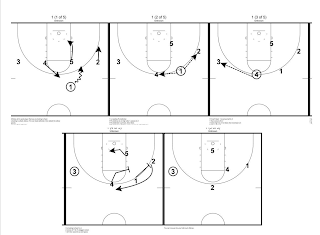Want to know what all the most successful businesspeople, athletes, celebrities and politicians know? Author Frank I. Luntz says winners (not the Charlie Sheen kind) possess nine common principles that anyone can incorporate in their own life. It’s no magic potion. It’s these essentials:
People Centeredness – Paradigm Breaking – Prioritization — Perfection –
Partnership — Passion — Persuasion — Persistence — Principled Action
People-Centeredness
Winners know what makes people tick, and they connect either to our fears or our aspirations—or both. The job of all winning communicators is to recognize what is missing in others’ lives and then try to address it. Winners help us imagine the possibilities that change our realities. The people-centered approach is to address, resolve, and alleviate personal pain—to focus on “solutions” rather than the management of the problem.
Winning Trait: Discover what people need and help them get it.
Paradigm Breaking
Winners are not improvers; they are game-changers. Remember, as much as we say we want change, it is natural to resist it. As human beings, we innately fear the unknown, even if we simultaneously embrace it. The best communicators know how to position their new product or idea as an improvement that people should expect to have—not a burden they’ll have to bear.
Winning Trait: Present change as an improvement, not a burden.
Prioritization
They (winners) know how to separate what must be done from what should be done—and that has a direct correlation to what they say and when they say it. In fact, identifying and effectively articulating priorities may be the single most important component of successful communication. Winners prioritize their messages. In fact, in the era of texting and Twitter, the longer you speak, the less people hear.
Winning Trait: Carefully select what you say and what you do.
Perfection
If you’re not driven to perfection, you’ll never reach excellence. It’s one thing to work sixteen-hour days because you have to. It’s another to work sixteen-hour days because you want to. Winners who are passionate about their work don’t mind a sixteen-hour day if that’s what it takes for them to be the best they can possibly be.
Winning Trait: You don’t have to be perfect. But you have to be your very best.
Partnership
No one is perfect. Honest, open communication is paramount for a partnership to survive. Without it, trust and respect will simply wither. Partnerships thrive on achieving the right balance that maximizes the “good” and minimizes the “bad” that each side brings to the relationship.
Winning Trait: Don’t let “bad” fester. Communicate clearly with your partner and turn it into “good.”
Passion
There isn’t a winner anywhere who doesn’t bring passion to what they do or how they communicate. There are three language attributes at play:
First, they communicate confidence in themselves and in their products;
Second, the message always rests on results and solutions; and
Third, there is a clear call to action at the end.
But passion is about more than just words and languages. Effectively communicating passion requires focus on style and delivery.
Winning Trait: Passion isn’t something you just have; it’s something you share.
Persuasion
Winners don’t preach; they persuade. They tell you exactly why you should accept their point of view, yet you feel like you came to their conclusions on your own.
Winning Trait: Persuasion is explaining why an idea is great; not how it’s their great idea.
Persistence
Winners know how to succeed over the long haul. In fact, they know that winning is defined by repeat performances and increasing achievements. Winners never give up, never accept defeat, and work as long and as hard as it takes to get the job done right. Winners commonly say, “Don’t tell me why I can’t do it. Tell me how I can get it done.”
Winning Trait: Persist until you perspire.
Principled Action
What good is winning at work if you lose at life? The concluding chapter puts in perspective the essential nature of a set of the guiding principles that define true winners. It focuses on those who gave up their morality, humanity, and decency in the chase for success—and how they fell from grace because winning wasn’t just everything, it was the only thing.
Winning Trait: Winning is whole-life success in all areas, not just one.
–Chapter read and annotated by Ashley Glenn, SUCCESS Marketing Manager.






























